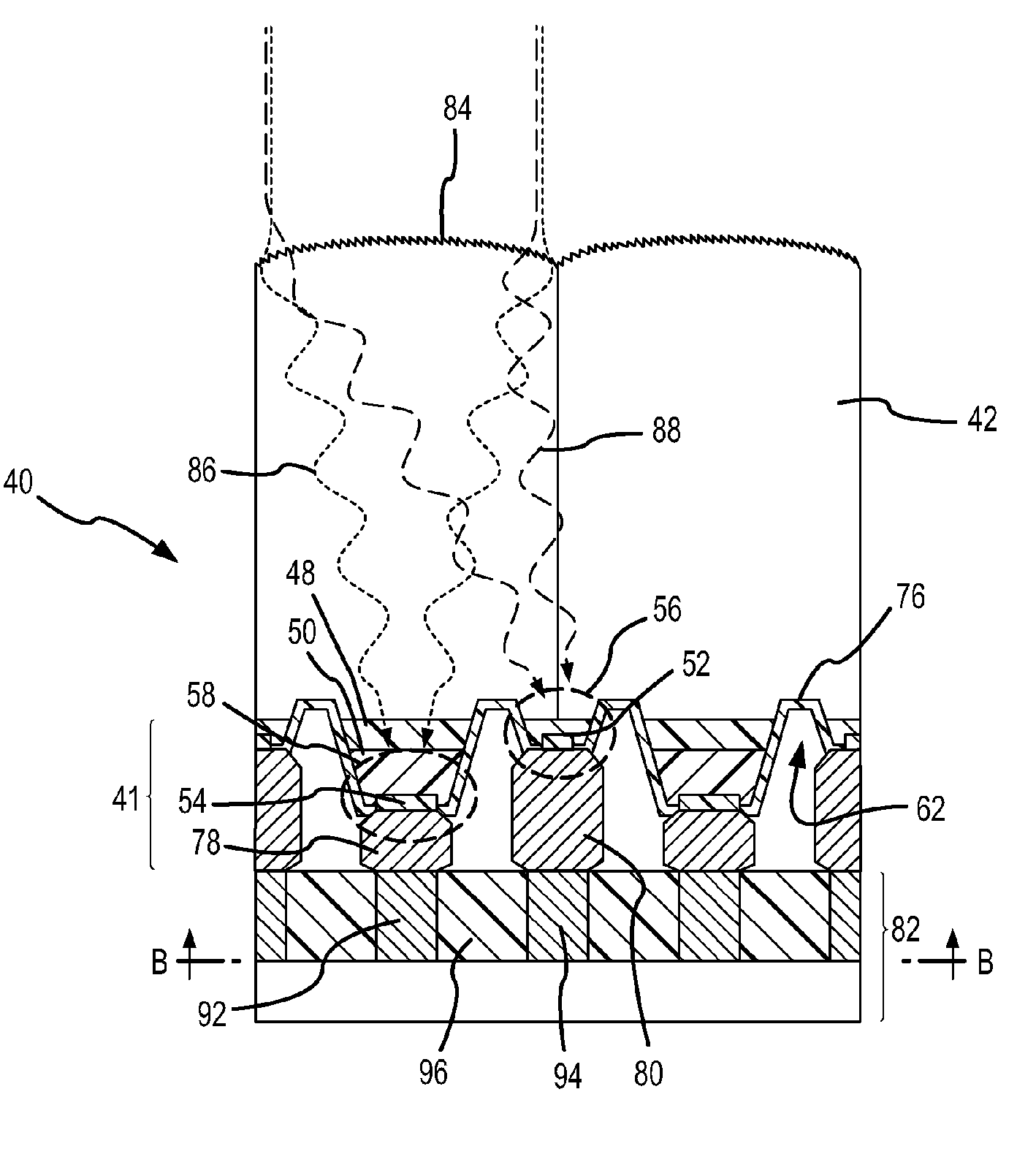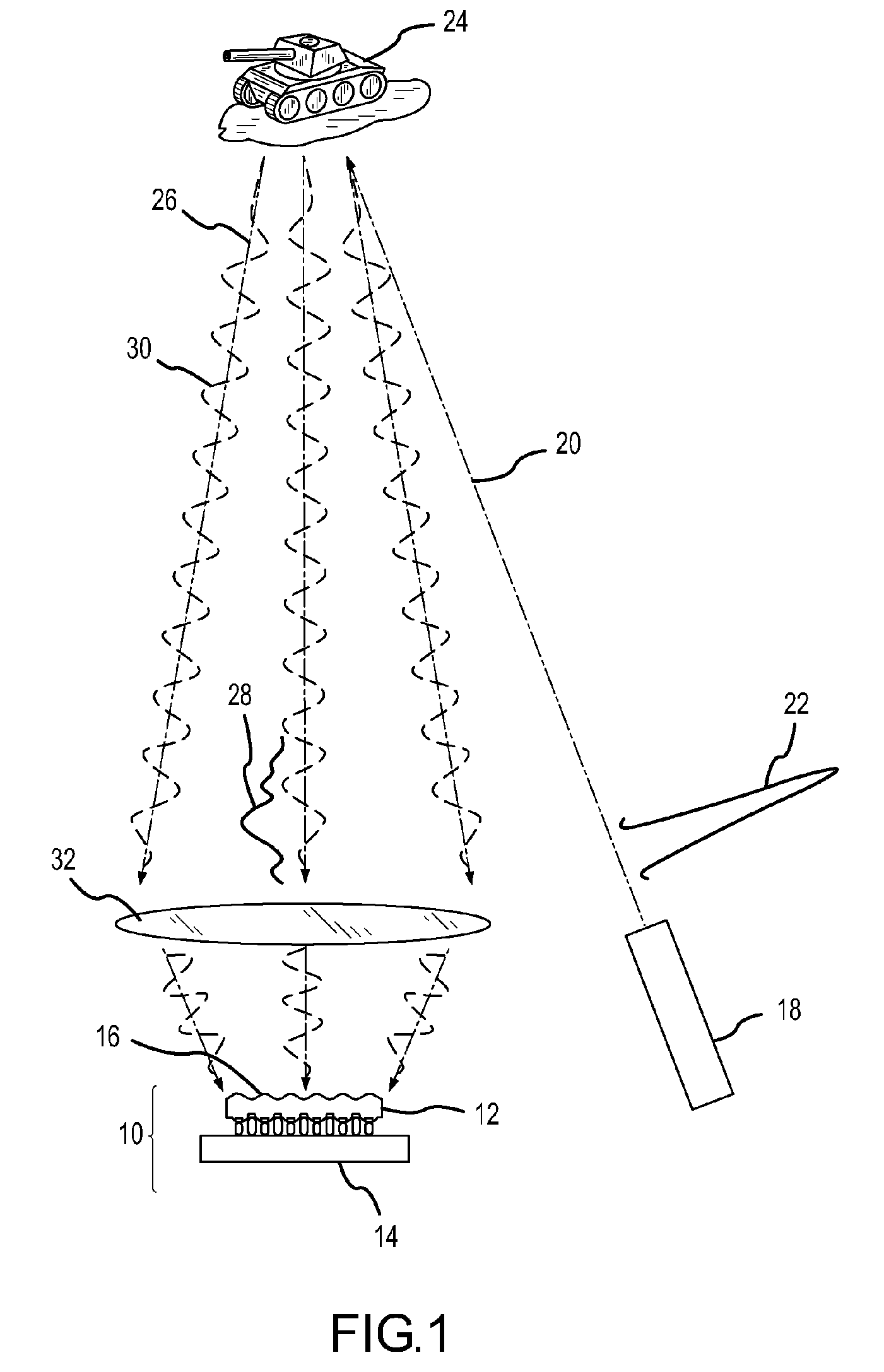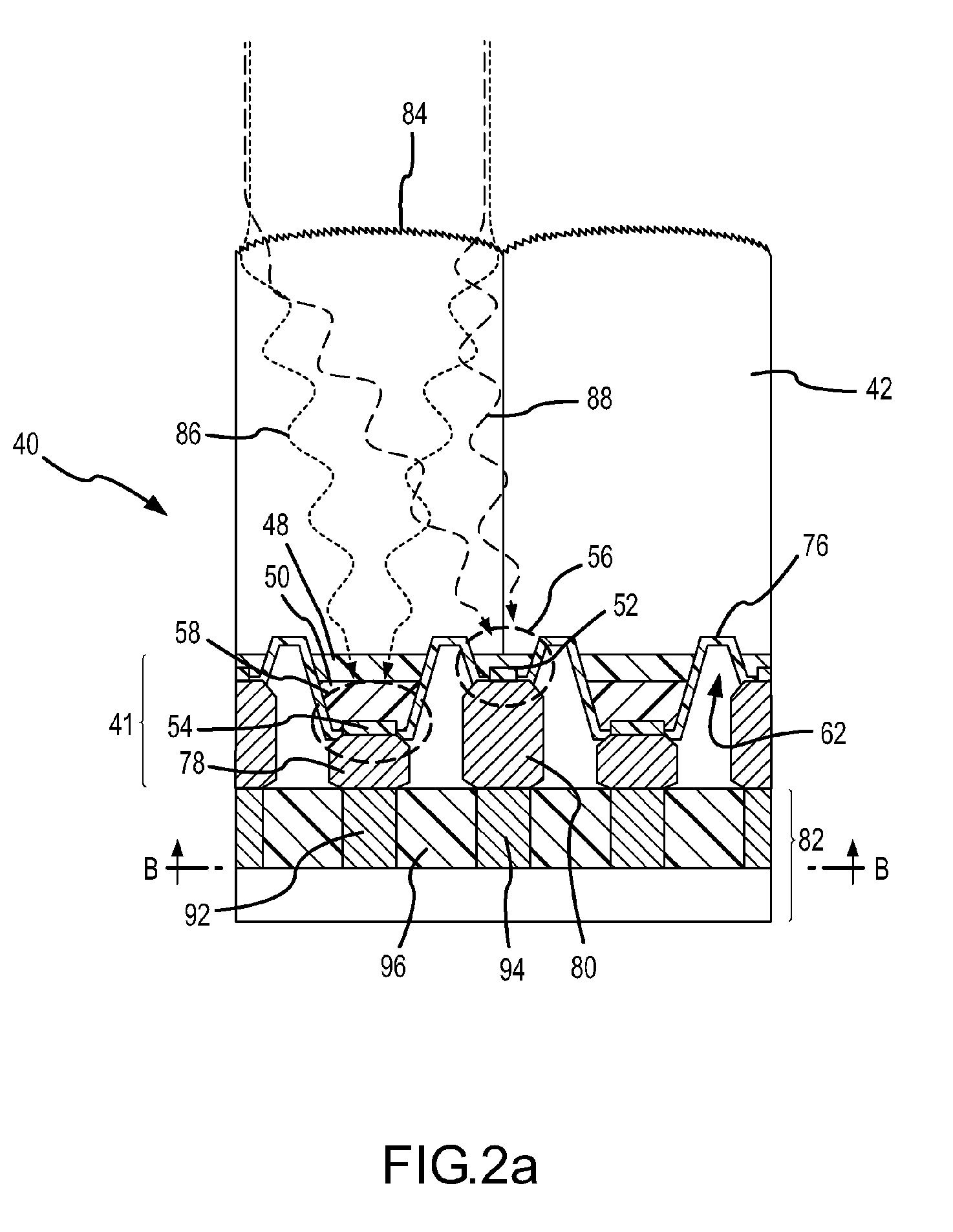Multimode focal plane array with electrically isolated commons for independent sub-array biasing
a focal plane array and sub-array biasing technology, applied in the field of multi-mode focal plane arrays, can solve the problems of not being able to meet the typical “active-passive” sensing application, requiring both high gain and temporally varying detector bias, and neither approach is suitable for typical “active-passive” sensing applications. , to achieve the effect of improving the fill-factor
- Summary
- Abstract
- Description
- Claims
- Application Information
AI Technical Summary
Benefits of technology
Problems solved by technology
Method used
Image
Examples
Embodiment Construction
[0028] The present invention provides an FPA that includes at least two sub-arrays of photodetectors for detecting incident radiation at different modes with elements of at least two sub-arrays co-located in each of at least one image pixel to provide registration among images from the different modes. The sub-arrays are configured with electrically isolated commons to support independent mode biasing.
[0029] The FPA may be configured to detect incident radiation over a broad spectrum including IR, visible, UV and possibly millimeter wave. The FPA can be constructed from any alloy semiconductor system with different band gaps, including the entire range of II-VI pseudobinary alloys (e.g. [Zn, Mn, Cd, Hg][S, Se, Te]), III-V pseudobinary alloys ([B, Al, Ga, ln][N, P, As, Si, Bi]), and IV-VI “lead salt” compounds ([Sn, Pb][S, Se, Te]). In addition, separate layers might be attached to one another by gluing and thinning while maintaining isolation between regions of common material used...
PUM
 Login to View More
Login to View More Abstract
Description
Claims
Application Information
 Login to View More
Login to View More - R&D
- Intellectual Property
- Life Sciences
- Materials
- Tech Scout
- Unparalleled Data Quality
- Higher Quality Content
- 60% Fewer Hallucinations
Browse by: Latest US Patents, China's latest patents, Technical Efficacy Thesaurus, Application Domain, Technology Topic, Popular Technical Reports.
© 2025 PatSnap. All rights reserved.Legal|Privacy policy|Modern Slavery Act Transparency Statement|Sitemap|About US| Contact US: help@patsnap.com



